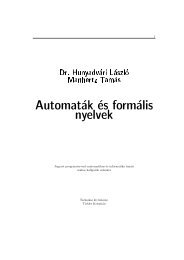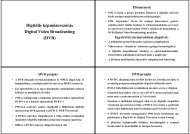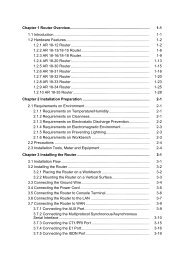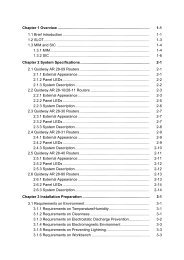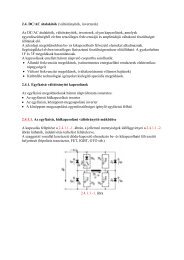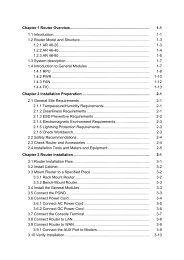chapter 8.pdf
chapter 8.pdf
chapter 8.pdf
You also want an ePaper? Increase the reach of your titles
YUMPU automatically turns print PDFs into web optimized ePapers that Google loves.
Section 8.2 Latches and Flip-Flops 579DO NOT COPYmodule latchdecTable 8-2title 'Latching Microprocessor Address Decoder'ABEL programfor a latching" Inputsaddress decoder.AVALID, ABUS31..ABUS20pin;" LatchedDOand decoded outputsNOT COPYROMCS, RAMCS0, RAMCS1, RAMCS2 pin istype 'com,retain';ABUS = [ABUS31..ABUS20];ROM = ^hFFF;RAMBANK0DO= [0,0,0,0,0,0,0,0,.X.,.X.,.X.,.X.];NOT COPYRAMBANK1 = [0,0,0,0,0,0,0,1,.X.,.X.,.X.,.X.];RAMBANK2 = [0,0,0,0,0,0,1,0,.X.,.X.,.X.,.X.];equationsROMCSDO= AVALID & (ABUS==ROM)NOT# !AVALID & ROMCSCOPY# (ABUS==ROM) & ROMCS;RAMCS0 = AVALID & (ABUS==RAMBANK0) # !AVALID & RAMCS0# (ABUS==RAMBANK0) & RAMCS0;RAMCS1 = AVALID & (ABUS==RAMBANK1) # !AVALID & RAMCS1# (ABUS==RAMBANK1) & RAMCS1;RAMCS2DO= AVALID & (ABUS==RAMBANK2)NOT# !AVALID & RAMCS2COPY# (ABUS==RAMBANK2) & RAMCS2;end latchdecDO NOT COPYAfter seeing how easy it is to build S-R and D latches using combinationalPLDs, you might be tempted to go further and try to build an edge-triggered Dflip-flop. Although this is possible, it is expensive because an edge-triggeredflip-flop has four internal states and thus two feedback loops, consuming twoPLDDOoutputs. Furthermore, theNOTsetup and hold times and propagationCOPYdelays ofsuch a flip-flop would be quite poor compared to those of a discrete flip-flop inthe same technology. Finally, as we discussed in Section 7.10.6, the flow tablesof all edge-triggered flip-flops contain essential hazards, which can be maskedonly by controlling path delays, difficult in a PLD-based design.DO NOT COPY8.2.7 Registers and Latches in VHDLRegister and latch circuits can be specified using structural VHDL. For example,Table 8-3 is a structural VHDL program corresponding to the D latch circuit ofFigure 7-12 on page 443. However, writing structural programs is not really ourmotivationDOfor using VHDL;NOTour goal is to use behavioral programsCOPYto model theoperation of circuits more intuitively.Table 8-4 is a process-based behavioral architecture for the D latch thatrequires, in effect, just one line of code to describe the latch’s behavior. Note thatthe VHDL compiler “infers” a latch from this description—since the codeCopyright © 1999 by John F. WakerlyCopying Prohibited



